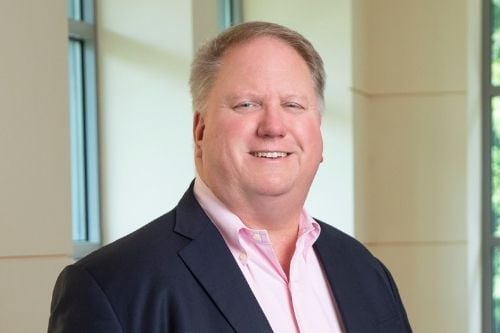

Insurance agencies are a historically resilient type of business, surviving and thriving even in the most difficult economic climate. To achieve growth and implement innovation, while retaining their independence through turbulent times, more and more agencies are flocking towards networks, alliances and aggregators.
Renaissance Alliance, a membership network for fully independent property and casualty insurance agencies, welcomed 33 new member agencies in 2020, marking the largest year of growth in the company’s history and taking its total number of agency members to 117.
“We’re delighted to begin 2021 by officially welcoming so many new agents to Renaissance,” said Kevin Callahan (pictured), chairman and CEO of Renaissance Alliance. “2020 was a challenging year for everyone, but our alliance continues to strengthen through the addition of these forward-thinking, growth-minded agencies. We are now rapidly approaching $1 billion in P&C premium.”
If anyone is an advocate for the independent agency sector, it’s Callahan. In building Renaissance Alliance and expanding it into new states, Callahan has stayed true to his belief that independent agencies are the “most valuable part of the property and casualty value chain” – as long as they have the scale, the skill and the capital (three core elements offered by Renaissance) to stay relevant for consumers today.
“Much of the world that’s been analyzing the property and casualty business for the last 25 years, particularly the personal lines and small commercial business in the United States, has been continually calling for the demise of the independent agent,” said Callahan. “The independent agent is a dinosaur, the independent agent is ineffective, the independent agent is inefficient. Customers want to be able to do this work directly, so going direct to insurance companies and using online tools is the future.
“Although we believe 100% in the importance of the use of technology, the use of the right software, and the use of data and analytics for independent agents, we are not believers at all in the fact that independent agents are dinosaurs. In fact, we believe the independent agent is the most valuable part of the property and casualty value chain - more important than the insurance carriers and more important than the vendors that serve the insurance carriers.”
There are approximately 1,500 property and casualty insurance companies in the United States. State Farm has the largest market share of personal lines business at 4.5%, and the percentage market share falls fast from there.
“Insurance carriers – the risk takers - are a dime a dozen. They’re everywhere. And because of regulation, they’re largely offering the same or similar products, and their pricing is determined by state regulators,” Callahan commented. “The real differentiation in this marketplace is in the independent agency. That’s where the customer relationship exists. That’s where the trust exists between the customer and the agent. That’s where the customer gets the advice that they need to best understand how to manage their risk, whether that’s their personal risk or the risk associated with their small business.
“Of course, 2020 was another year to underscore the value of independent agents, because we’re facing risks as a country and a world that few could have imagined really thinking about. At Renaissance Alliance, we are huge believers in the independent agent. We’re huge believers in technology, software, data and analytics, but we don’t see the independent agent being tossed aside because the customers can go directly to those sources. We think the independent agent needs to use those tools and continue to build the trusted advisory relationship that they’ve had for decades.”
Renaissance Alliance’s value proposition is to help independent agency owners to grow premium, maximize revenue and increase agency value through increased profit sharing, guaranteed override revenue and offloading non-revenue generating activities. The net effect is higher revenue, decreased expenses and accelerated agency growth.
“There are a lot of independent agents that want to maintain their independence. They’ve been running these companies for decades. Oftentimes, they’re the second or third generation to run these agencies, and, in some cases, they have children that they’re hoping will want to take over. But the challenges always come back to scale, skill and capital,” Callahan told Insurance Business. “Joining our platform offers them an opportunity to get scale, because now they’re one of currently 117 members with collective P&C premium approaching $1 billion. What they can do from a leveraging perspective, whether it’s with carriers or vendors, is nothing on their own compared to what we can do together. But they still run their own business, they make all their own decisions, and they decide how to how to manage and run their business.
“We also bring them skill. Independent agencies are always very good at relationship management, they’re good at selling, they’re good at creating trust, they’re good at giving advice and understanding their product and risk - but they’re not always as good at understanding what technology they need or how to implement technology and train their people. That’s what we can bring to the table regarding skill, whether it’s around choosing hardware, choosing software, or the training associated with helping the folks in their agencies figure out how to do that.”
